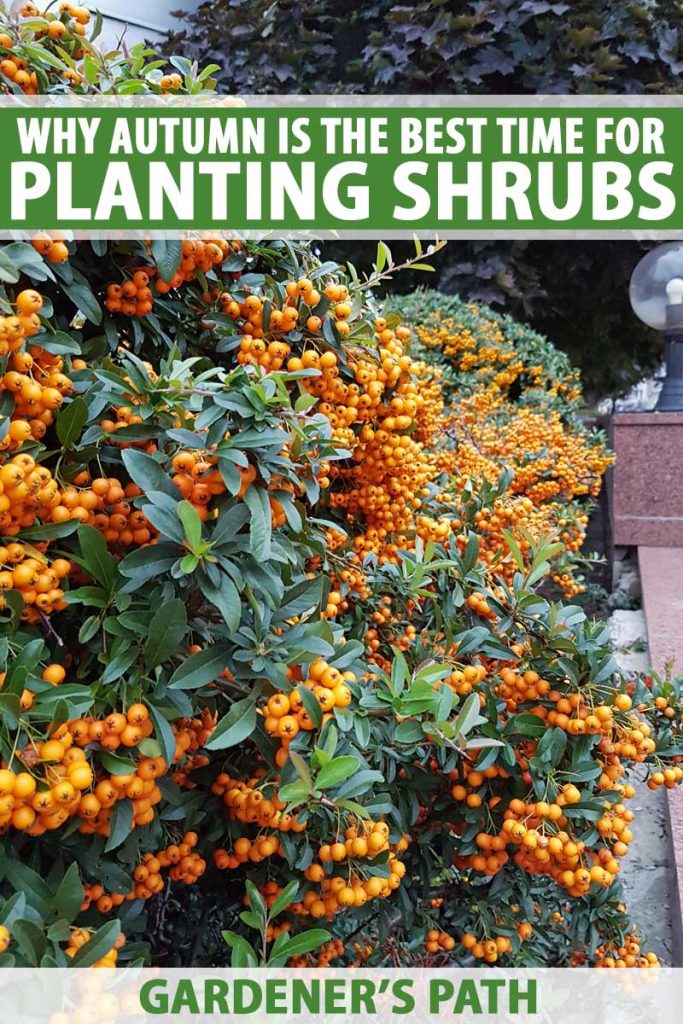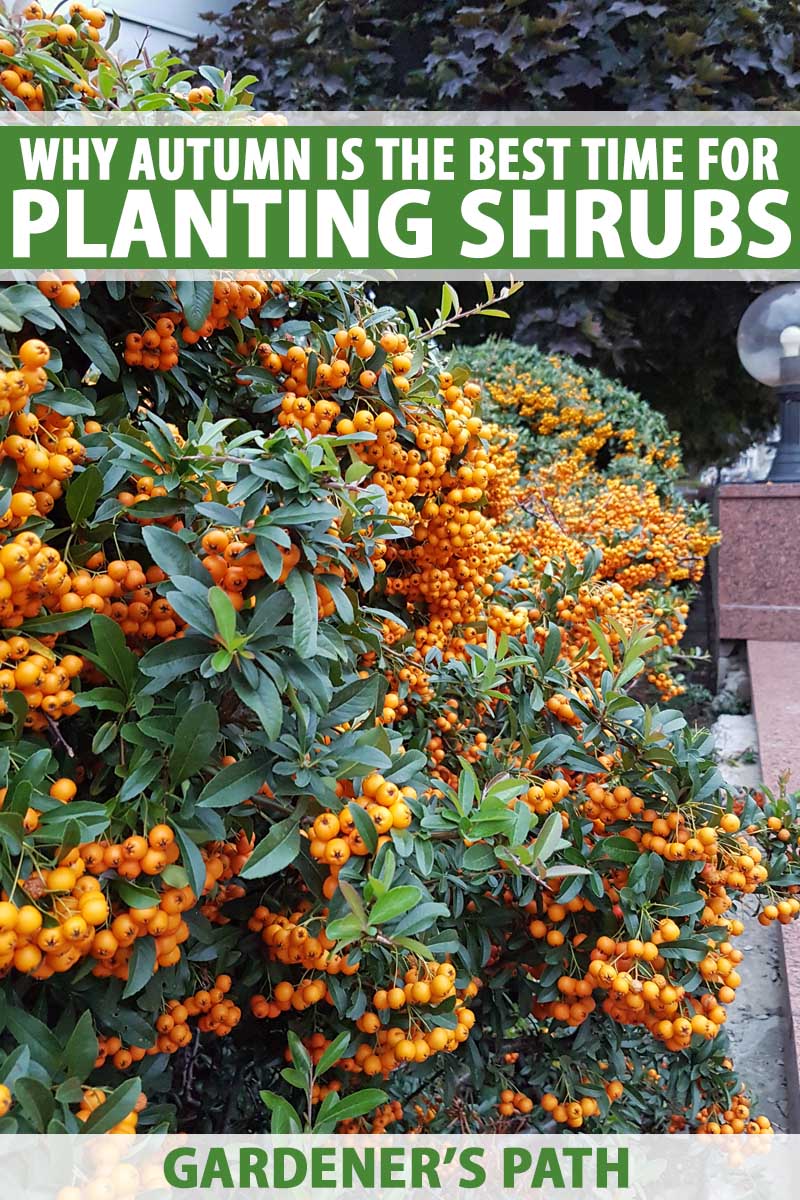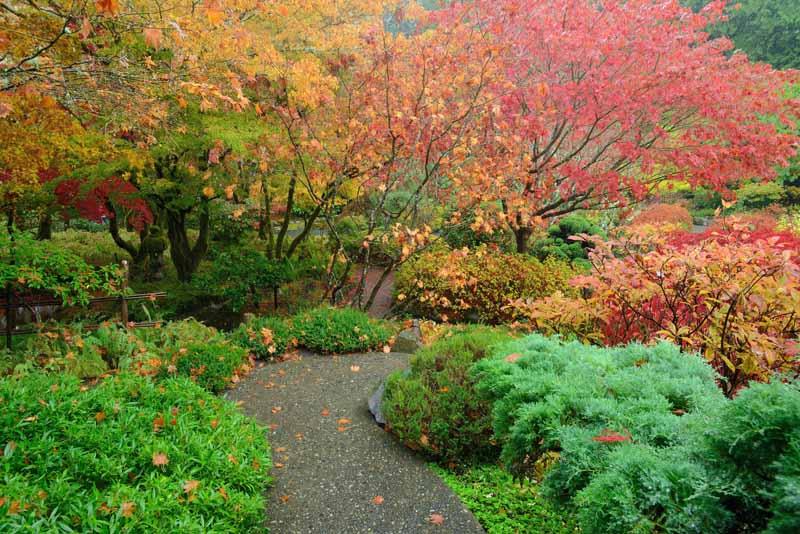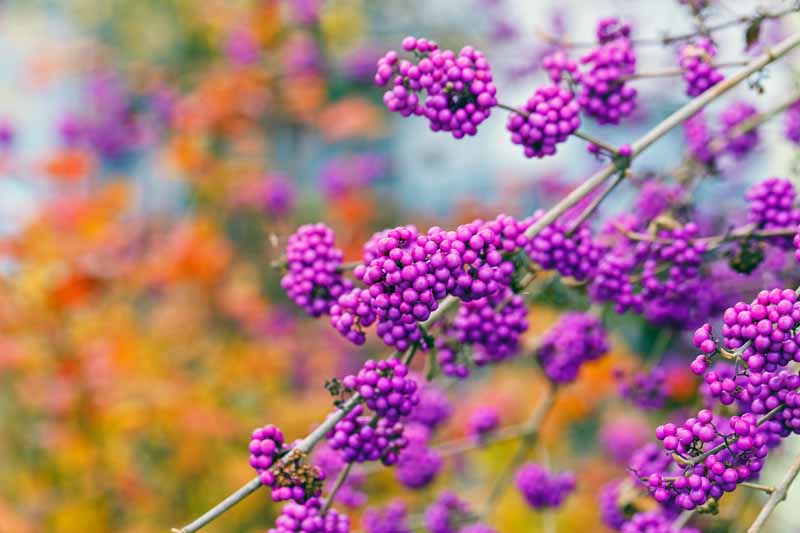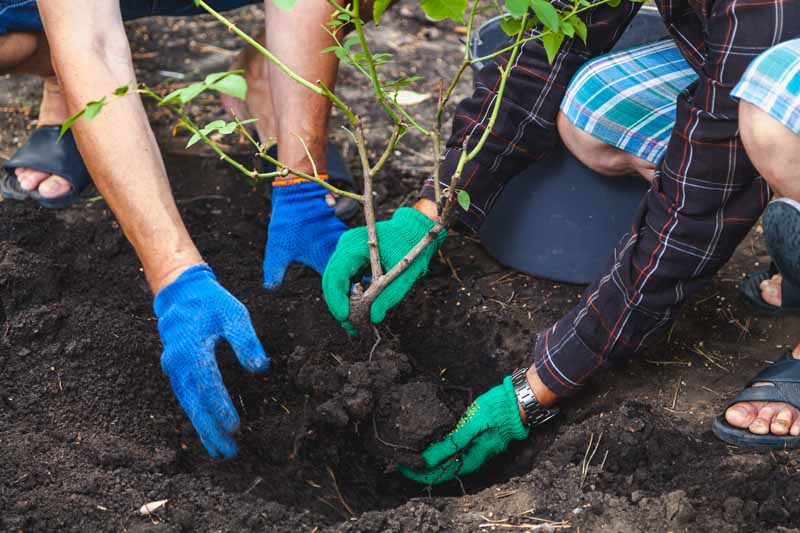And while you’re out there, why not install a few shrubs into your landscape? As with trees, autumn is generally considered to be the best time to plant ornamental bushes. We link to vendors to help you find relevant products. If you buy from one of our links, we may earn a commission.
Why Fall Is Best
For one thing, as we mentioned above, the weather is cooler but still tolerable in fall. Humidity is often lower, too. Do you really want to be sweating buckets while digging holes in August? Me neither. So, to start with, fall is a comfortable and enjoyable time to be outdoors.
More importantly, however, planting shrubs in the fall allows the plants to establish an extensive root system before winter sets in. In fall, the plants aren’t programmed to produce shoots or leaves, but in a newly planted situation, they’ll spend their energy developing roots, so come springtime, they’ll be able to draw plenty of resources for above-ground development. Plants that get a head start on root development in the fall will be in better position for summer’s climatic challenges.
Another good reason to plant in the fall is that garden centers often put plant material on sale at this time of year. And who appreciates a bargain more than gardeners? A no-duh caveat: If you’re hankering to plant a shrub that’s winter-tender in your area, then it’s best to wait until spring.
It’s September, But Still Really Hot
It’s important to take into consideration just when your “fall” is. Temperatures drop and humidity falls at different times in different parts of the country, of course. Just because the kids are back in school doesn’t necessarily mean it’s a good time to get out the shovel.
When temperatures have dropped and the forecast says they will remain lower for the foreseeable future, you should be safe to plant your shrubs. As long as soil temperatures are in the 50s or even the 40s, you should be okay.
How to Plant Shrubs
If temperatures have lowered to a point where you can dig a hole without risking a coronary, it’s time to get started! You’ve found some nice shrubs on sale, and they appear to be in good health – not too charred from summer’s heat. Dig a hole that is about a foot wider than the root ball, and about as deep as the root ball.
Cut any circling roots. Some experts say to cut an X into the bottom of the root ball to encourage new rooting. Place the plant in the hole and backfill with dirt you removed from the hole, but do not pack the soil. You can press lightly to eliminate air pockets, but don’t compact the soil. Don’t fertilize at this time. It may be appropriate to do so in the spring, but don’t do it in the fall as you don’t want to encourage new growth as you head into the winter months. Water well, add more soil if necessary, and then add a thick layer of mulch.
Plant in autumn and you’ll have well-established plants in spring that will be ready to put on plenty of new growth. Do you plan ahead and plant in fall? Tell us your experiences in the comments section below. And if you’re pondering which plants to grow, consider these:
How to Grow and Care for Spirea Bushes How To Grow and Care for Vitex Flowers How to Grow and Care for Chinese Fringe Flower Shrubs (Loropetalum)
© Ask the Experts, LLC. ALL RIGHTS RESERVED. See our TOS for more details. Uncredited photos: Shutterstock.
